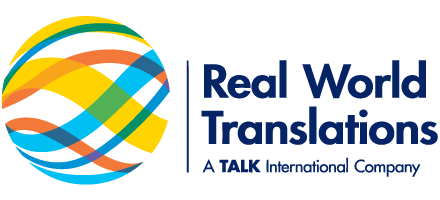Professional Interpretations
REAL WORLD TRANSLATIONS provides professional interpretation services from and into any language, whether for conferences, in-person meetings, telephone conferences or sign-language communication.
We employ trained and experienced interpreters who provide factually and culturally accurate interpretations. Our interpretation services are competitively priced.
Typically, Interpretation is understood as the “translation” of the spoken word. In todays’ multicultural environment and globalized economy, the need for these services arise frequently.
In an interpretation session, it’s important to transmit the information from the presenter or “source” to the recipient/s or “target” accurately. To do so requires great skill on the part of the interpreter; not only in the understanding and translation of the language, but also in conveying the emotions and feelings imparted by the source.
To follow is a listing of the Interpretation Services we provide:
Simultaneous Interpreting
Most frequently used for large conferences or meetings, simultaneous interpreting requires that the linguist “translate” what the speaker is saying, as they speak. Thus, the interpreter is both listening and speaking at the same time. This takes intense concentration; simultaneous interpreters often work in teams, taking breaks every 30 minutes or so. Simultaneous interpreting generally requires equipment such as microphones, headsets, and in some instances, booths.
Escort Interpreting
The interpreter accompanies a person or a group of people on a visit to a meeting or interview and usually delivers more informal conversations.
Consecutive Interpreting
The interpreter delivers the message after the source-language speaker has finished speaking. The interpreter must take notes and then translate what the speaker means to say during the pause. The interpreter should be sitting or standing beside the speaker(s).
Sign Language Interpreting
The interpreter communicates with people who are deaf or hard of hearing using sign language. It is also used to communicate by people who can hear, but who cannot speak or for those who have speech difficulties. There are many different types of sign languages in the world. The form of sign language primarily used in North America is known as American Sign Language (ASL).
Telephone Interpreting
The interpreter usually delivers interpretation via telephone on a conference call. He or she listens to the conversation first and then proceeds to render it into another language.
Note: Telephonic interpretation and conference calls are available by special request only. Please call for rates and availability of this service.
Voiceovers/ foreign language voice talent
This refers to a production technique where a voice is broadcast live or pre-recorded on radio, television, film, theatre and/or a presentation. The voice-over can be spoken by someone who also appears on-screen in other segments or it may be performed by voice talent.
Dubbing and Subtitling
These two major types of screen translation are the most used in the global distribution and consumption of filmic media. Since their arrival with the introduction of sound to cinema, both have been seen as compromised methods of translating dialogue because they interfere in different ways with the original text, sound track, or image.
Real World provides services to approximately 300 clients per year.
FAQs about Interpretations
Translation deals with the written form while interpretation is spoken.
We ask that our clients give us a 24-hour notice for all cancellations as a courtesy. If you are unable to provide a 24-hour notice, the full deposit will be retained by REAL WORLD TRANSLATIONS.
We prefer notification of at least 48 hours but will always try to work with you to accommodate your immediate needs.
We are able to use interpreters who are registered with the court or certified for the requested assignment.
Consecutive interpretation involves a relay in which one speaker says a few sentences, the interpreter interprets and then the other speaker responds.
In simultaneous interpretation, the interpreter interprets at the same time that the speaker is speaking, although a few words behind.
Yes. We have a large database of sign language interpreters and can accommodate most requests for this service.
The interpreter usually delivers interpretation via telephone on a conference call. He or she listens to the conversation first and then proceeds to deliver it into the other language.
Note: Telephonic interpretation and conference calls are available by special request and are limited by circumstance. Please call for rates and availability of this service.










